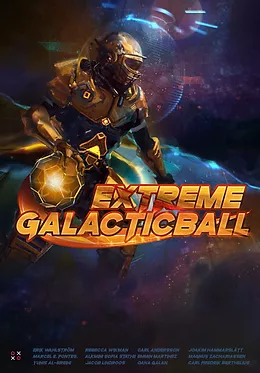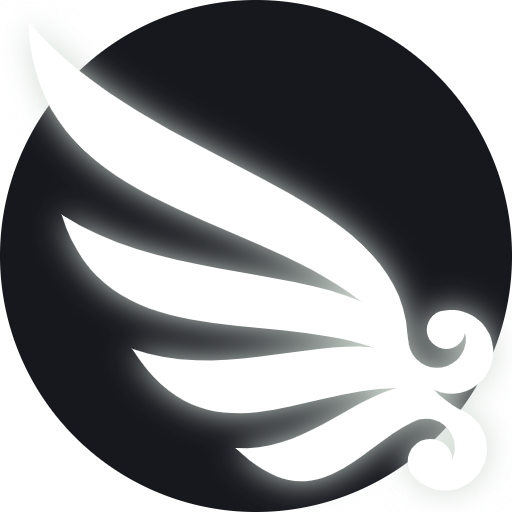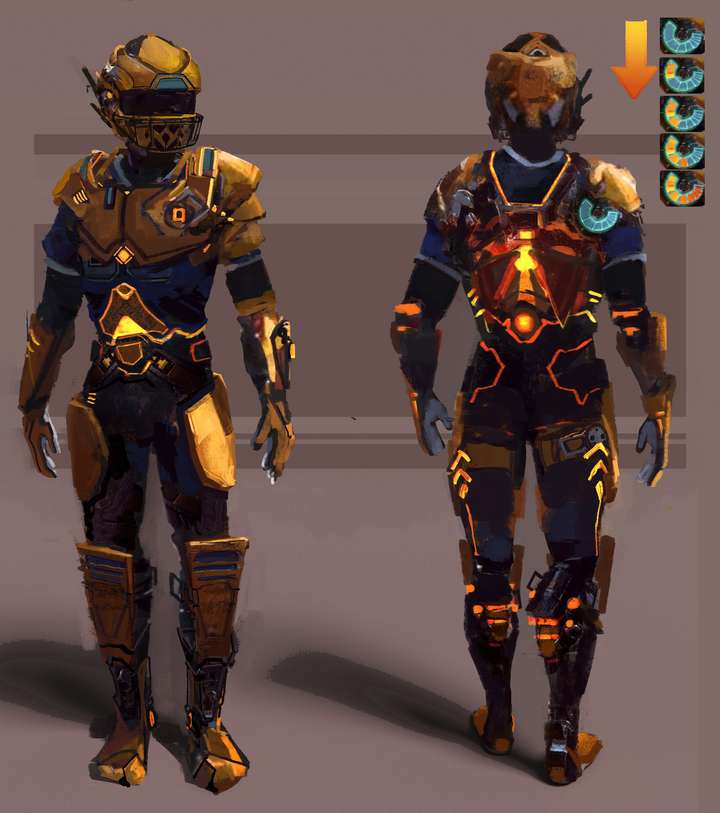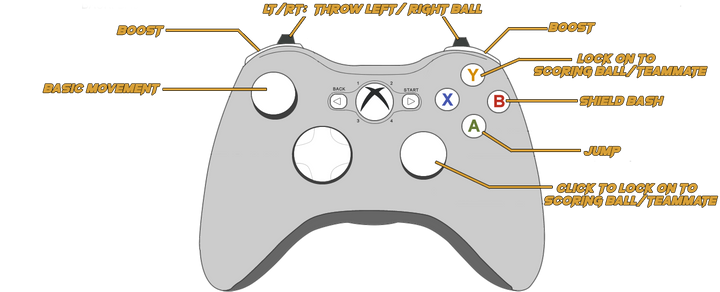
Extreme Galacticball (2019)

Genre: Local multiplayer ball game (shooter style)
Platform: PC
Engine: Unreal Engine 4
Development Time: Four weeks
Team: Three designers, four 3D artists, two 2D artists, three programmers.
Extreme Galacticball is a dynamic, fast-paced take on dodgeball mixed with American football, meant for four players in two teams. The objective is simple: collect the golden score ball and run it into the enemy team’s goal. However, to do this, players must first avoid the enemy team and their use of the weaponised dodgeballs on the court.
My Roles
- Narrative designer
- Concept designer
- Scripter
My Responsibilities
- Part of general concept development
- Part of writing and maintaining concept document and process documentation for the project
- Part of gameplay and level mechanics
- Part of world building and narrative design (player teams and announcer voice lines)
- Collecting and implementing suitable game sounds
- Part of recording and implementing voice lines
- Wrote overviews and a pitch to present to clients (Future Games teachers and project jury)
- Part of regular playtesting to ensure quality gameplay
This was the second game project I was a part of at Futuregames. The requirements were for it to be multiplayer and a combination of two sports. We chose American football and dodgeball. The scifi elements were added in just for the fun of it.
The Vision
Our objective for this game was a fun, chaotic experience that players could share with others in the style of console party games. The theme for the project was to combine sports, and we came to the conclusion that American football and dodgeball would slot right into that concept. It made for a lot of fun, emergent gameplay, which was exactly the goal we set out for.
I found it remarkably simple and fun to adapt to the group vision in this project. We had a clear agreement on what we wanted and whenever details changed, they were easy to adapt and modify. The important part for me here was that I knew when people wanted things to change, and keeping it cohesive through those changes was a fun challenge for me.
Communication
This was another project in which I learned a lot about the communication within a team. As this was a bigger team, there was more need for me to stay attentive to how everyone was working to keep in line with the bigger picture. We were more divided into departments this time with art (2D and 3D) and design (designers and programming) needed to stay on target in parallell with each other.
We had a scrum master for this project and the communication in the team was great. We had room to test, dismiss, and use more ideas than we had originally thought we could, and daily standups helped to keep that process quick and efficient.
Narrative
As this is a focused, isolated party game, there was not much room for a linear narrative. Another narrative designer (Erik Wahlström) and I adapted to this by adding a narrator and team names to the UI and lineup. Players can choose to join either the Moon Riders or the Handsome Honeybadgers, and an enthusiastic announcer (in the style of Smash Brothers) announces each start, half time, and goal.
Due to time constraints and some adjustments in the tone of the game, a lot of what was written for it had to be cut, so we edited from more elaborate voice lines to ones that were quicker and more to the point. Though perhaps not my first choice, doing this was an interesting exercise in prioritising what is best for the game, and I am happy with the result of it.
Scripting
I also stepped outside my comfort zone with this project and took a more active part in the scripting of it than I did with Escape in Frogress. I learned a lot about not just the technological aspect, but also of the structure the team needs to be effective with it. This was also my first time working with a team of programmers in the group.
I was part of working on the UI as well as some quick-and-dirty prototyping of some of the ideas we had for mechanics. In this way, we were able to playtest all of our ideas and choose which ones would fit best within the scope we had to work with. The result is a game that was fun to test and more fun to show off to others at the end of the production.




